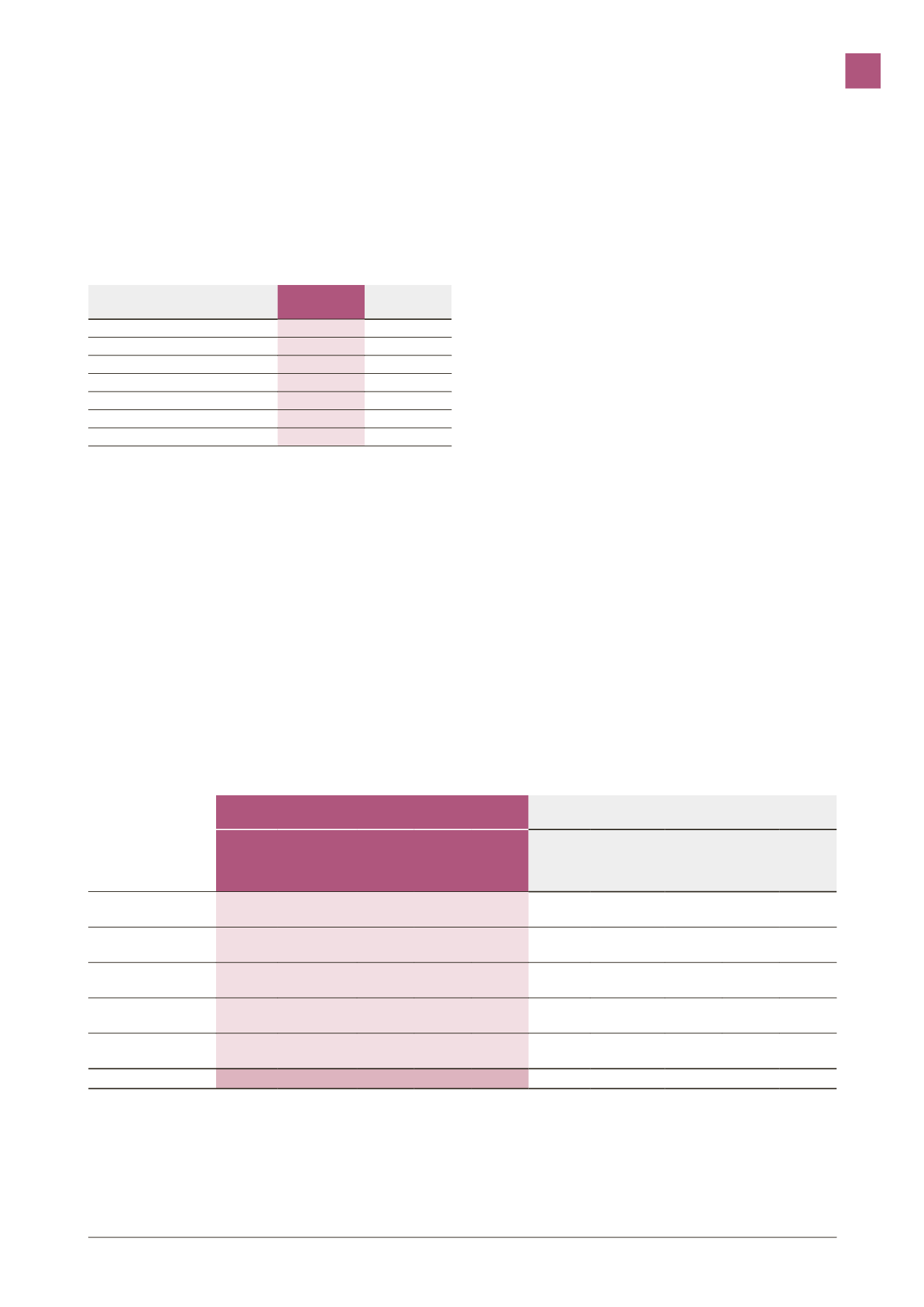

LISI 2016 FINANCIAL REPORT
47
In 2016, the Group put new hedges in place and the amount of its
unexpired instruments at December 31, 2016 covered a nominal
amount of €73.6 million. The features of these instruments are
presented in note 2.8.4 “Commitments”.
As at December 31, the Group’s net variable rate position broke down
as follows:
(in €’000)
12/31/2016
12/31/2015
Loans – variable rates
133,500
158,434
Short-term banking facilities
15,984
9,243
Cash and cash equivalents
(123,314)
(103,986)
Net position prior to management
26,170
63,691
Interest rate SWAP
73,660
76,265
Hedging
73,660
76,265
Net position after management
(47,490)
(12,574)
The approach taken consisted in taking into account as a calculation
basis for the sensitivity to rates the net, lending and borrowing
positions.
At December 31, 2016, the impact on the unhedged portion of a
100 basis point change in the variable rates was €475,000.
2.4.3.2 Commodities price fluctuation risk
At December 31, the Group hedged the risk on its future purchases of
the raw material nickel. The fair value as at December 31, 2016 of the
derivatives used amounted to – €145,000.
More information is provided in chapter 5 paragraph 2.6.1.
2.4.3.3 Currency risk
Overall, the Group is subject to two types of foreign exchange risk:
–
–
Outside the EUR and USD zones, it has production facilities in a
dozen countries, in which the majority of the sales of its subsidiaries
are denominated in EUR or in USD, whereas their costs are mainly
denominated in local currency, which is the GBP, CAD, TRY, CZK
and, to a lesser extent, the MAD, CNY, INR and PLN, giving rise to
a cash requirement in local currencies. A strengthening of these
currencies would affect the business performance of the Group;
–
–
USD ranks second in terms of amount invoiced in that currency by
the Group, after the EUR, mainly in LISI AEROSPACE. Invoicing in
other currencies is not significant at the Group scale. A weakening
of the USD would affect the Group’s economic performance.
In order to protect its results, the Group is implementing a hedging
policy aimed at reducing the factors of uncertainty affecting its
operational profitability and at giving it the time necessary to adapt
its costs to any unfavorable monetary environment.
Hedging of the foreign exchange on risk local currencies
The Group has very good visibility over its local currency requirements.
Also, its hedging policy is based on managing a portfolio of financial
instruments to protect against a rise in local currencies. The hedging
horizon is 12-24 months.
Hedging of USD currency risk
As indicated above, the generation of USD arises mainly from the
Group’s Aerospace Division, which benefits from non-current contracts
providing for invoicing in this currency. The hedging policy is based
on the management of a portfolio of financial instruments to secure
a guaranteed average hedging rate. The hedging horizon may extend
over up to five years.
Portfolio of foreign exchange derivatives
The main hedging instruments used by the Group as part of its foreign
exchange risk management are forward sales, purchases and sales of
options and structured products.
The portfolio of foreign exchange derivatives is broken down as follows:
12/31/2016
12/31/2015
Fair
value
(1)
Notional
amount
(2)
< 1 year
from
1 to
5 years
more
than
5 years
Fair
value
(1)
Notional
amount
(2)
< 1 year
from
1 to
5 years
more
than
5 years
Long position of GBP
against USD
–7.2
35.0
21.8
13.2
0.0
–1.4
27.4
27.4
0.0
0.0
Long position of CAD
against USD
–1.5
39.6
33.6
6.0
0.0
–4.1
57.6
24.0
33.6
0.0
Long position of TRY
against EUR
–0.2
18.7
18.7
0.0
0.0
–0.3
34.1
34.1
0.0
0.0
Long position of PLN
against USD
–0.3
20.4
20.4
0.0
0.0
–0.1
20.4
20.4
0.0
0.0
Short position of USD
against EUR
–14.1
335.2 120.3 215.0
–6.1
405.1 129.8 275.3
TOTAL
–23.3
–11.9
(1) Fair value amounts are expressed in millions of euros.
(2) Maximum notional amounts are expressed in millions of currencies.
Derivatives and hedging activities that meet the cash flow hedge
criteria are accounted for in accordance with the provisions of IAS 39.
Hedging instruments are measured at fair value. Changes in value,
are recognized in recyclable equity (other comprehensive income
— OCI) for the effective portion of the hedge and in income for the
ineffective portion. In particular, the hedging activities accounted for
CONSOLIDATED FINANCIAL STATEMENTS
3


















